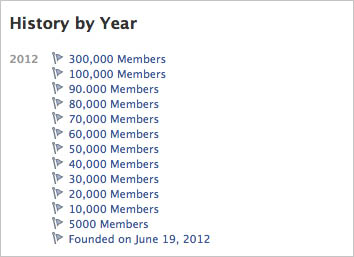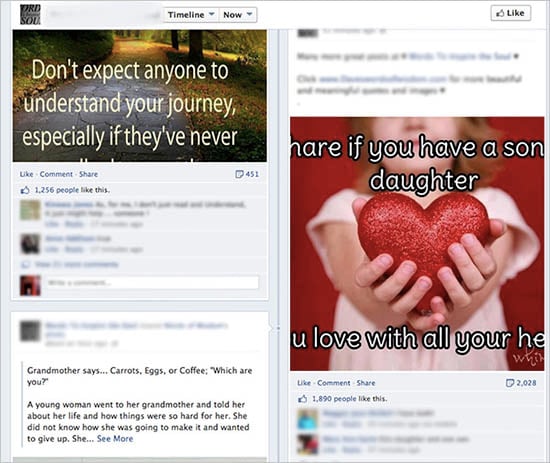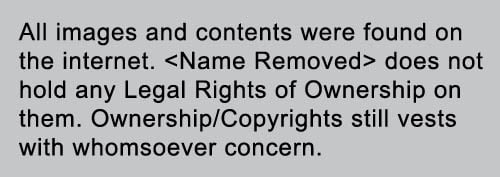Like Farmers Profiting By Hosting Stolen Photos on Facebook
![]()
I’d love to say I coined the term “Like farm”, but it’s entirely possible I read it somewhere before, as a brief search on that term turned up other articles on the growing phenomenon of content farms on Facebook. For a while now, I’ve been watching my own news feed fill up with unattributed photos and artwork. And I think we’ve all seen the equally unattributed and ubiquitous quote art (either graphic design or simply pasted over photos). Although the amount of this content seems to rise and fall, it has seemed like it is growing of late. Or perhaps I’ve just become more sensitive to it?
I’ll be the first to admit that even decades on, the WWW is still the Wild Wild West, a place where what’s legal may not be ethical, and what’s ethical may not be legal. One person’s innocent sharing of an image they loved is another’s infringement. And the happy middle between the two seems to be nowhere in sight any time soon.
![]()
I think most creative people share their content online with the fervent hope it will be found, the consequence of being found and shared is sometimes wonderful. Getting new eyes on one’s work is rarely complained about. Yet other times it may morph into a battle to even be recognized as the creator in the first place.
Content online without a clear creator has become so commonplace that even some visual artists share and like it without a second thought.
My angst however tangible goes beyond a simple lapse in attribution. It’s the fact that so much of this material is coming not from a bored kid sitting at home but from a shadowy figure whose only motive is how to profit from it. And the more it appears Facebook is squelching the volume on Facebook pages, possibly in an effort to combat this issue, the more the people that are gaming the system gain strength as many of them have become the master manipulators of people’s emotions.
How many images do you see in your news feed on a given day with a note that most people won’t have the courage to share this? Or share this if you love your child, mother, brother, aunt, uncle, cousin, country, bedbug…
Well, you get the point.
They play on human emotions, love for another, our patriotism, the entire spectrum of what makes people tick. Share me, like me, love me. And it works! Every day I encounter another content farm with hundreds of thousands of likes and posts that have been shared and re-shared and liked out the wazoo.

The above screen snippet comes from the latest one of these pages I ran across today. Founded less than a year ago and liked by over 800,000 people (I know the chart above only goes to 300k, but they hadn’t updated their own chart in awhile).
This page has experienced the kind of growth very few reputable Facebook pages will ever know. The insane thing is, without trying hard, I could easily come up with a dozen similar pages all sharing the same basic content and hardly ever original.
The people running these pages watch for engaging content and then re-use it ad infinitum. If you scroll through their Timeline, you’ll start seeing a pattern. They share the same content spaced evenly enough to not be too obvious, but still on infinite play.

What motivates these people you may wonder? Surely they can’t be putting all this effort into a lark? There may be a rare few out there who do it just for attention or because they love to share, but most I encounter are following the same pattern: Grow a page to thousands and thousands of people and then quietly begin slipping in other content.
It might be affiliate links to Amazon or links to a site of their own. Never fear, those sites have advertising, too! It may still seem like a lot of work, but consider if you’re the page above with 800,000 followers and growing. You share one or two links to something commercial every day and you get a few hundred people making purchases. Just that, a few hundred sales and you get a cut, but every day, that adds up to making a living in your bathrobe off other people’s content.
And if you’re serving up links to Amazon or some other affiliate, you didn’t even have to pay for a web-host. You let Facebook host your (stolen) content and you let an affiliate handle the sale. It really is a winning formula that so far has no end in sight.
There’s no real way to report these pages. As far as the stolen content goes, only the copyright holder is allowed to register a complaint. And even if the page has more or less confessed in their description, there’s still no way to contact Facebook and explain the obvious.

Can you imagine a restaurant with a disclaimer at the door that all the photographs decorating their walls were “found” in the shop around the corner and removed without permission or payment? Or a note that I had found all the articles on my site on the Associated Press and copied them? This is the same commercial use!
I’ve had this subject brewing in the back of my mind for a while now, but what finally pushed me over the edge was searching for the answer to an SEO question I had and stumbling down a rabbit hole to the dark side of the net. I found a forum filled with discussions about methods for creating these types of content farm pages, growing them at astronomical speeds, how to monetize them, etc.
It’s not that I didn’t have an inkling what was going on before, but having it in black and white in front of me was different. I saw people exchanging ideas for manipulating Facebook and all at the detriment to content creators and users. The sad thing is these people are master marketers. That’s the knowledge I walked away with.
They could put their knowledge to good use. Perhaps they could even arrange a true symbiotic relationship with content creators instead of the quietly parasitic one they are employing. Instead they are preying on users who have the very human desire to discover and share beautiful content.
For content creators, to provide a real world analogy, it’s as if these shadowy page owners created a glossy magazine, filled it with the creators’ content and not only didn’t attribute it to them, they didn’t pay the creator for its use, a double-slap in the face.
It’s kind of discouraging, I have to admit, to see the orphaned photography of the web get thousands upon thousands of shares and likes while some wonderful artists and other content producers are sharing their own material and lucky to get just a tiny bit of attention and notice. This is the problem with formulas that assume a simple linear relationship between engagement and quality content.
And it’s the reason I find myself on Facebook less and less lately. And I hate to admit there’s a part of me that remains unconvinced that the people behind Facebook care. There are thousands of eyes on this content with Facebook’s own ads surrounding it. Why should they care whether that content has any meaning or legitimacy?
![]()
I’d love to be proved wrong and for Facebook to begin looking seriously at pages with explosive growth and massive following. They can’t be that hard to find. I can certainly find them and I lack the access to the data they have.
Absent that, I have some small hope that maybe the users themselves will catch on to what’s happening. If you’re on Facebook, or an social network, before you share that picture that tells you no one will have the courage to share it, take a look at where it originated. Does the shadowy page or person who shared it share the same type of material on a cycle?
Before you share that sunset that literally has text begging you to share and like it, do you see any information about who actually created it? Is it linking to the photographer’s website or Facebook page? Simply question the motives behind the content you’re liking. Otherwise, you’re simply another cow grazing on another Like farm…
About the author: Mark E Tisdale is a visual artist whose work is largely based on his travel photography. Whatever the location, the underlying goal behind all of his work is capturing and sharing the inherent beauty of our world. His work may be seen at Beautiful World Art. Visit his website here. This article originally appeared here.
Image credits: Photo illustration based on Ploughing by Klearchos Kapoutsis, photo illustration based on Wild West Falls by o b s k u r a, Facebook HQ, by eston by marcopako